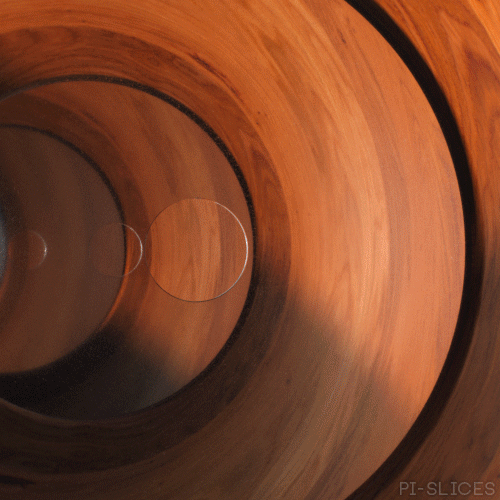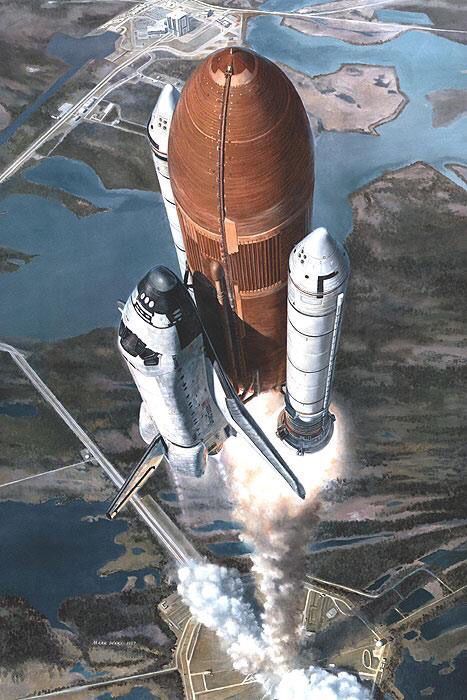
epic-flight
SPACE-AVIATION-SCIENCE FICTION-RANDOM HUMOR
236 posts
Latest Posts by epic-flight

Lynds Dark Nebula 1251 : Stars are forming in Lynds Dark Nebula (LDN) 1251. About 1,000 light-years away and drifting above the plane of our Milky Way galaxy, the dusty molecular cloud is part of a complex of dark nebulae mapped toward the Cepheus flare region. Across the spectrum, astronomical explorations of the obscuring interstellar clouds reveal energetic shocks and outflows associated with newborn stars, including the telltale reddish glow from scattered Herbig-Haro objects seen in this sharp image. Distant background galaxies also lurk on the scene, buried behind the dusty expanse. This alluring view imaged with a backyard telescope and broadband filters spans about two full moons on the sky, or 17 light-years at the estimated distance of LDN 1251. via NASA

Rick Sternbach’s 1976 cover for Under Pressure, by Frank Herbert









Quantum Physics: The study of Super Cold and Super Small.
Via The cosmos way

Cosmic Entity.
Twitter / Instagram / Gumroad / Patreon
KnownOrigin / SuperRare / OBJKT / Zedge

Ghost Form.

Young Stars of NGC 346 : The massive stars of NGC 346 are short lived, but very energetic. The star cluster is embedded in the largest star forming region in the Small Magellanic Cloud, some 210,000 light-years distant. Their winds and radiation sweep out an interstellar cavern in the gas and dust cloud about 200 light-years across, triggering star formation and sculpting the region’s dense inner edge. Cataloged as N66, the star forming region also appears to contain a large population of infant stars. A mere 3 to 5 million years old and not yet burning hydrogen in their cores, the infant stars are strewn about the embedded star cluster. In this false-color Hubble Space Telescope image, visible and near-infrared light are seen as blue and green, while light from atomic hydrogen emission is red. via NASA

The Lively Center of the Lagoon Nebula : The center of the Lagoon Nebula is a whirlwind of spectacular star formation. Visible near the image center, at least two long funnel-shaped clouds, each roughly half a light-year long, have been formed by extreme stellar winds and intense energetic starlight. A tremendously bright nearby star, Herschel 36, lights the area. Vast walls of dust hide and redden other hot young stars. As energy from these stars pours into the cool dust and gas, large temperature differences in adjoining regions can be created generating shearing winds which may cause the funnels. This picture, spanning about 10 light years, combines images taken in six colors by the orbiting Hubble Space Telescope. The Lagoon Nebula, also known as M8, lies about 5000 light years distant toward the constellation of the Archer (Sagittarius). via NASA

‘distant.03′

Another beautiful space painting from my friend Steve R Dodd. ‘The Beacon’. Originally displayed in NASA’s 25th anniversary art show, Cleveland Museum of Natural History (1980s)




🟣Moon Wish 🟣

Pink Sparkles.
Twitter / Instagram / Gumroad / Patreon
KnownOrigin / SuperRare / OBJKT / Zedge

HiPOD 18 Jan 2022: Icy Cliffs on Mars
This area, on the western edge of Milankovic Crater on Mars, has a thick deposit of sediment that covers a layer rich in ice. The ice is not obvious unless you look in color.
In the red-green-blue images that are close to what the human eye would see, the ice looks bright white, while the surroundings are a rusty red. The ice stands out even more clearly in the infrared-red-blue images where it has a striking bluish-purple tone while the surroundings have a yellowish-grey color.
The ice-rich material is most visible when the cliff is oriented east-west and is shielded from the sun as it arcs through the sky to the south.
Enhanced color image is less than 1 km across.
ID: ESP_071573_2350 date: 2 November 2021 altitude: 307 km
NASA/JPL/UArizona

Cylinder Fragments - 230322

John Harris, ‘Sunflowers in Starlight’

Start of Everything.
Twitter / Instagram / Gumroad / Patreon
KnownOrigin / SuperRare / OBJKT / Zedge


HiPOD: Bedrock Exposures in Nirgal Vallis
This observation covers two tributaries and the main channel of Nirgal Vallis. The channel is approximately 610 kilometers long and is named after Nergal, the Babylonian god of war and counterpart to the Roman god of war, Mars. Mars Orbiter Camera image show light-toned bedrock; our high resolution picture can gives us a better view of the channel form and bedrock stratigraphy. (Grayscale cutout is less than 5 km across; enhanced color is less than 1 km.)
ID: ESP_074945_1515 date: 23 July 2022 altitude: 257 km
NASA/JPL-Caltech/UArizona

Circular Windows - 221006

"T-Plus 30" by Aviation Artist Mark Waki
The Space Shuttle Discovery completes its roll to heading and begins its pitchover maneuver about 30 seconds after liftoff from Pad B of Kennedy Space Center's Launch Complex 39.
Artists Note: It's actually T-Plus 23, but T-Plus 30 was decided on for the painting's title. Discovery is about 5,000 feet AGL, has completed 179 degrees of roll to heading and is pitched over about 20 degrees. The vehicle is gaining altitude at 500 feet per second while accelerating at 1.8g

Eclipse.

Earth, Moon, and Sun, painted by Chesley Bonestell, printed in Future Life, April 1978.

Sky Break.
Twitter / Instagram / Gumroad / Patreon
KnownOrigin / SuperRare / OBJKT / Zedge

Rick Sternbach, 1976


HiPOD: Mesa Stratigraphy at Terby Crater
A 2 to 3 kilometer sequence of stratigraphy exposed across three mesas in the northeastern portion of Terby Crater likely capture a diverse range of sedimentary rock types that include deposition across all of the three major Martian geologic eras: Noachian, Hesperian and Amazonian. (These epochs date back billions of years.) We can create digital terrain models o measure bedding dips at these key locations. (Enhanced color cutouts are less than 1 km across.)
ID: ESP_074888_1520 date: 18 July 2022 altitude: 260 km
NASA/JPL-Caltech/UArizona

David A. Hardy

'plane-view'

Space shuttle re-entry.

Space Shuttle Atlantis launch, 3 October 1985.
USS Harry S. Truman Strike Group Flyover
The U.S. Navy Flight Demonstration Squadron, the Blue Angels, flew over Nimitz-class aircraft carrier, USS Harry S. Truman (CVN 75), on a return transit to Naval Air Station Pensacola following their annual flight over the U.S. Naval Academy commissioning ceremony May 20, 2020. The Harry S. Truman Carrier Strike Group (HSTCSG) remains at sea in the Atlantic as a certified carrier strike group force ready for tasking in order to protect the crew from the risks posed by COVID-19, following their successful deployment to the U.S. 5th and 6th Fleet areas of operation. (U.S. Navy video by Petty Officer 2nd Class Cody Hendrix)

Charon, moon of Pluto, observed by NASA's New Horizons probe just before closest approach on this day in 2015. (It flew within 12,500 km of Pluto and as close as 27,000 km to Charon.)






💙Cosmos Call💙